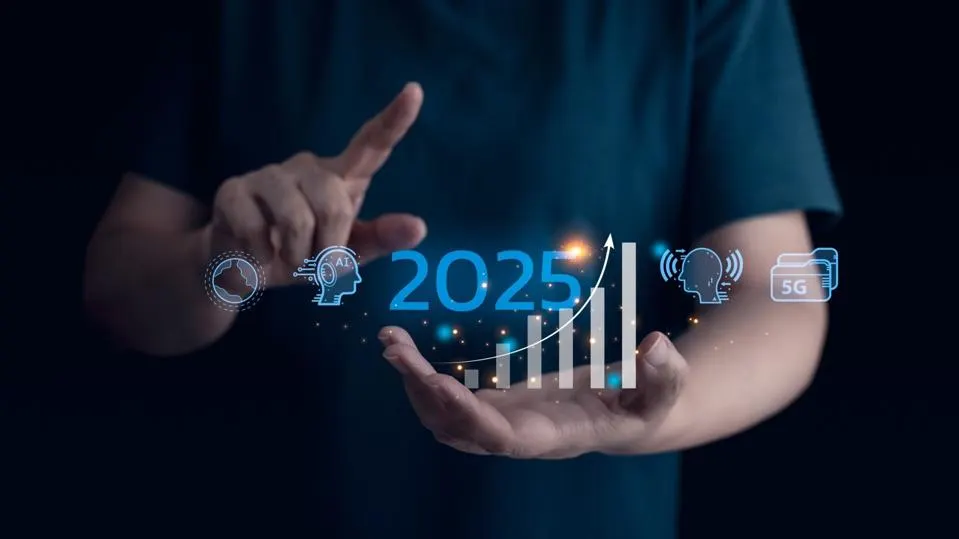What Is Virtual Reality (VR) In 60 Seconds
2 July 2021
You might think you’ve experienced VR, and you might have been pretty impressed. Particularly if you’re a gamer, there are some great experiences to be had out there (or rather, in there) today.
VR in education and training
VR is already making great inroads into education, with a large number of startups and established companies offering packaged experiences and services aimed at schools. Engage’s platform is used by the likes of Facebook, HTC, and the European Commission to enable remote learning. And one study published in 2019 found that medical students trained using VR were able to carry out certain procedures quicker and more accurately than peers trained using traditional methods.
These new methods of teaching and learning will become increasingly effective as new technologies emerge. One that is likely to make waves is the Teslasuit, which uses a full-body suit to offer haptic feedback, enhancing the immersion through the sense of touch. It also offers an array of biometric sensors enabling the user’s heartbeat, perspiration, and other stress indicators to be measured. The suit is already used in NASA astronaut training, but its potential uses are unlimited.
For training, it could be used to safely simulate any number of hazardous or stressful conditions and monitor the way we respond to them. For example, Walmart has used it to train retail staff to work in Black Friday situations, instructing them on how to best to operate in busy shop environments with long queues of customers.
As well as training us for dangerous situations, it will also drastically reduce the financial risks involved with letting students and inexperienced recruits loose with expensive tools and machinery in any industry.
VR in industry and work
The pandemic has changed many things about the way we work, including the wholesale shift to home working for large numbers of employees. This brings challenges, including the need to retain an environment that fosters cooperative activity and the building of company culture. Solutions involving VR are quickly emerging to help tackle these.
Spatial, which creates a tool best described as a VR version of Zoom, reported a 1,000% increase in the use of its platform since March 2020. In total, the value of the market for VR business equipment is forecast to grow from $829 million in 2018 to $4.26 billion by 2023, according to research by ARtillery Intelligence.
Communication giant Ericsson (which has provided Oculus VR headsets to employees working from home during the pandemic for VR meetings) has talked about creating the “Internet of Senses.” This involves developing projects involving simulating touch, taste and smell, and sensations such as hot or cold. It predicts that by 2030, we will be able to enter digital environments that appear completely real to all of our five senses simultaneously.
This will lead to the advent of what it calls the “dematerialized office” – where the office effectively vanishes from our lives as we’re able to create entirely interactive and collaborative working environments wherever we are in the world, simply by slipping on a headset and whatever other devices are needed for the task at hand.
VR in socializing
There are already a number of VR-based social platforms that allow friends or strangers to meet up and chat or play in virtual environments, such as VR Chat, Altspace VR, and Rec Room. As with VR in other fields, the growing level of immersion that is possible thanks to new technological developments will make them more useful and more attractive to mainstream audiences throughout the coming decade.
This year Facebook, which has long had a stake in VR due to its acquisition of headset manufacturer Oculus, unveiled its Horizon platform. Currently, in beta, it allows people to build and share collaborative online worlds where they can hang out, play games, or work together on collaborative projects.
While we will always make time for meeting up with friends and loved ones in the real world, as our working and school lives become increasingly remote, it’s likely that more of our social interaction will move into the online realm, too. Just as we are no longer barred from careers or educational opportunities due to an increasingly virtualized world, we will have more meaningful ways to connect with other humans as technology improves in this area.
Where to go from here:
If you would like to know more about , check out my articles on:
- 5 Predictions For Wearable Technology: From Fitness Trackers To “Humans 2.0”
- The 9 Biggest Technology Trends That Will Transform Medicine And Healthcare In 2020
- What Is The Internet Of Things (IoT) And How Will It Change Our World?
- These 25 Technology Trends Will Define The Next Decade
Or browse the Early Tech Innovations to find the metrics that matter most to you.
Related Articles
The Simple ChatGPT Trick That Will Transform Your Business AI Interactions
I believe ChatGPT and other generative AI tools can help pretty much any business.[...]
The Third Wave Of AI Is Here: Why Agentic AI Will Transform The Way We Work
The chess pieces of artificial intelligence are being dramatically rearranged. While previous iterations of AI focused on making predictions or generating content, we're now witnessing the emergence of something far more sophisticated: AI agents that can independently perform complex tasks and make decisions.[...]
How Generative AI Will Change Jobs In Cybersecurity
Ensuring robust cybersecurity measures are in place is more important than ever when it comes to protecting organizations and even governments and nations from digital threats.[...]
The 10 Most Important Banking And Financial Technology Trends That Will Shape 2025
As technological disruption and economic uncertainty continue to reshape the financial landscape, alongside dramatic shifts in consumer behavior and regulatory requirements, 2025 promises to be both challenging and opportunistic for banking and financial services.[...]
The 6 Most Powerful AI Marketing Trends That Will Transform Your Business In 2025
The quiet hum of AI servers is rapidly drowning out the traditional drumbeat of marketing departments worldwide.[...]
AI Everywhere – Scaling AI In The Cloud With Intel® Xeon®6
Today, the omnipresent AI that we’re starting to take for granted has become a critical tool for business.[...]
Sign up to Stay in Touch!
Bernard Marr is a world-renowned futurist, influencer and thought leader in the fields of business and technology, with a passion for using technology for the good of humanity.
He is a best-selling author of over 20 books, writes a regular column for Forbes and advises and coaches many of the world’s best-known organisations.
He has a combined following of 4 million people across his social media channels and newsletters and was ranked by LinkedIn as one of the top 5 business influencers in the world.
Bernard’s latest book is ‘Generative AI in Practice’.










Social Media